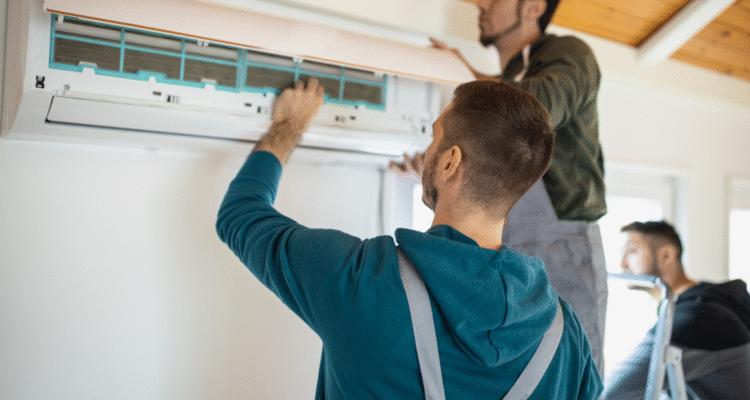As temperatures continue to soar during the summer months, having a reliable air conditioning (AC) unit becomes essential for comfort and safety. Whether you’re installing a new system or upgrading an old one, understanding how AC installation fits into the broader context of your HVAC system can save you time, money, and frustration.
In this article, we’ll explore everything you need to know about AC installation and HVAC systems—from how they work to what you should expect during the installation process. We’ll also cover tips for choosing the right unit and ensuring your system runs efficiently for years to come.
What Is an HVAC System?
HVAC stands for Heating, Ventilation, and Air Conditioning. It’s a comprehensive system designed to control indoor climate, including temperature, humidity, and air quality. A typical residential HVAC system includes:
- Heating (furnace or heat pump)
- Ventilation (ductwork and fans)
- Air Conditioning (central AC unit or ductless system)
Understanding your HVAC system helps you make better decisions when it comes to AC installation, especially when integrating a new unit into an existing setup.
Why Professional AC Installation Matters
Proper AC installation is crucial to the efficiency and longevity of your system. A poorly installed unit can lead to a host of issues, including:
- Increased energy bills
- Uneven cooling
- Frequent breakdowns
- Shorter lifespan of the unit
Hiring licensed HVAC professionals ensures your system is correctly sized, safely connected, and meets all local building codes.
Steps Involved in AC Installation
Whether you’re installing a central air system or a ductless mini-split, the general AC installation process includes:
- Assessment and Planning
An HVAC technician begins by evaluating your home’s size, layout, insulation, and ductwork (if applicable). This helps determine the proper size and type of unit you need. An undersized AC won’t cool your home effectively, while an oversized unit may cycle too quickly, leading to moisture issues and wear-and-tear.
- Choosing the Right Unit
There are different types of AC units, including:
- Central Air Conditioning – Ideal for homes with existing ductwork.
- Ductless Mini-Split Systems – Great for older homes or room additions without ductwork.
- Window Units or Portable ACs – Typically used for cooling individual rooms.
Consider energy efficiency ratings such as SEER (Seasonal Energy Efficiency Ratio) when choosing a unit. The higher the SEER rating, the more efficient the unit.
- Removal of Old Equipment (if necessary)
If you’re replacing an old AC, technicians will first safely remove and dispose of the old unit according to EPA regulations, especially since refrigerants can be hazardous.
- Installation of the New System
This involves:
- Setting up the indoor air handler and outdoor condenser
- Connecting refrigerant lines
- Securing electrical connections
- Testing airflow and thermostat settings
For central air systems, ductwork may also be inspected and repaired or modified as needed.
- System Testing and Calibration
Once installed, the system is tested to ensure optimal performance. Technicians check airflow, temperature output, refrigerant pressure, and thermostat accuracy.
Benefits of a Modern HVAC System
Installing a new AC system is more than just a comfort upgrade—it’s an investment in your home’s value and energy efficiency.
Here are some of the top benefits:
- Lower Energy Bills
New AC units are significantly more energy-efficient than older models. Systems with ENERGY STAR® ratings can reduce energy consumption by up to 20–40%.
- Improved Indoor Air Quality
Modern HVAC systems come equipped with better filtration and humidity control, which helps reduce allergens, dust, and mold growth in your home.
- Smart Home Integration
Many newer AC systems are compatible with smart thermostats, allowing you to control temperature settings remotely and schedule usage to save money.
- Quieter Operation
New systems often include noise-reduction technology, making them much quieter than older, clunkier models.
Maintenance Tips After Installation
To keep your HVAC system running efficiently long after installation, follow these tips:
- Change Air Filters Regularly – Every 1 to 3 months, depending on your home and filter type.
- Schedule Annual Inspections – Have your system professionally inspected and tuned up once a year.
- Keep Outdoor Units Clear – Ensure your condenser unit is free of leaves, dirt, and debris.
- Monitor Energy Usage – Spikes in your energy bill can indicate that your system needs servicing.
Cost Considerations
The cost of AC installation varies based on several factors:
- Type of Unit – Central air systems are more expensive than ductless or window units.
- Size of Your Home – Larger homes require larger units, which increases cost.
- Ductwork Condition – Installing or repairing ductwork can add to your total.
- Labor and Local Rates – Labor costs vary by region and company.
On average, homeowners can expect to spend between $4,000 and $10,000 for a full central AC installation, while ductless systems range from $2,000 to $5,000 per zone.
How to Choose the Right HVAC Contractor
Choosing the right contractor is essential for a successful AC installation. Look for:
- Proper Licensing and Insurance
- Positive Online Reviews
- Transparent Pricing
- Experience with Your System Type
- Warranties on Labor and Parts
Always get multiple quotes and ask detailed questions before signing a contract.
Final Thoughts
Installing a new AC unit is a major decision, but when done right, it can transform your home’s comfort and efficiency. By understanding how your HVAC system works and what’s involved in AC installation, you’ll be better prepared to choose the right equipment and contractors for the job.
Whether you’re building a new home or upgrading an outdated unit, taking the time to plan and work with certified professionals ensures you get the best performance from your HVAC system for years to come.
